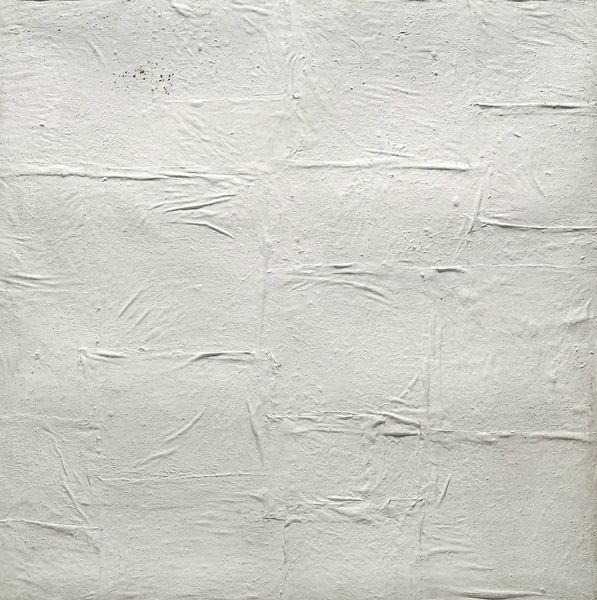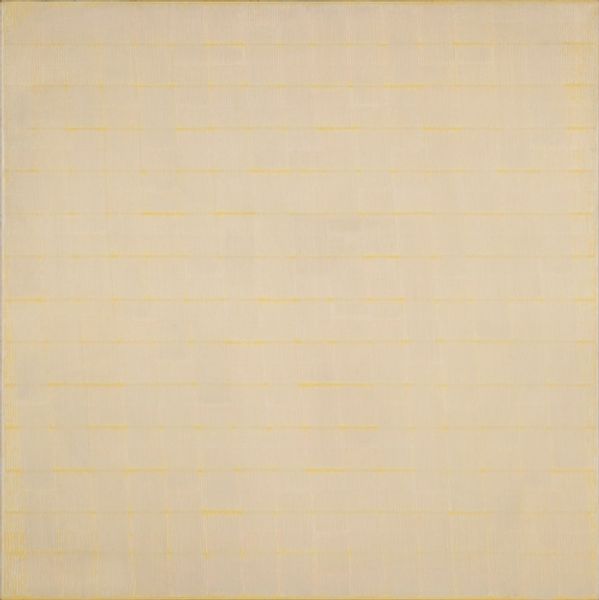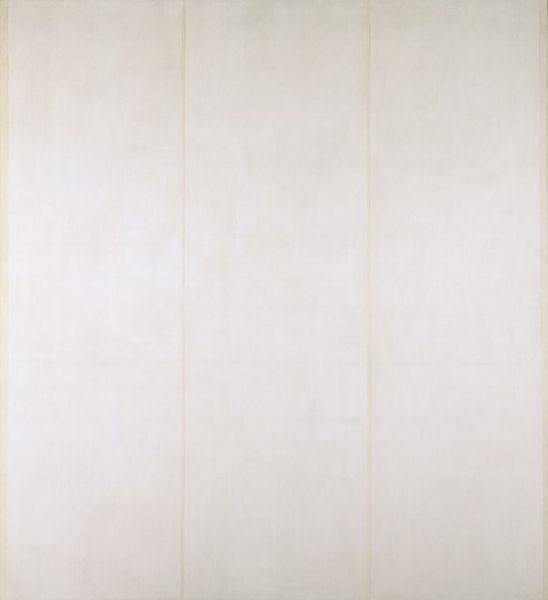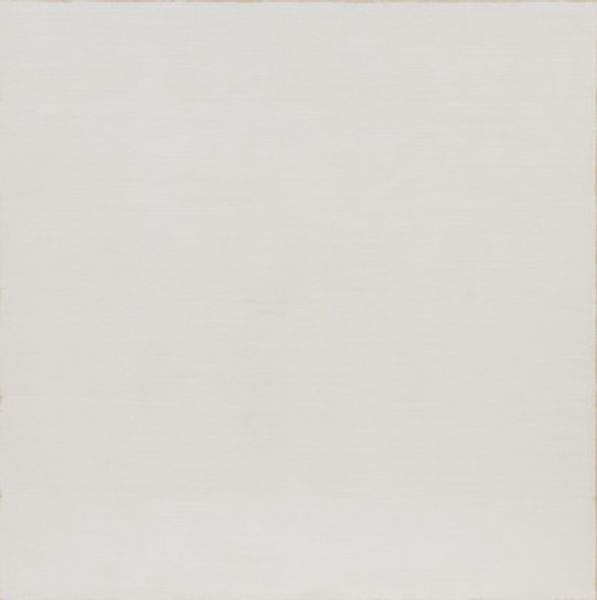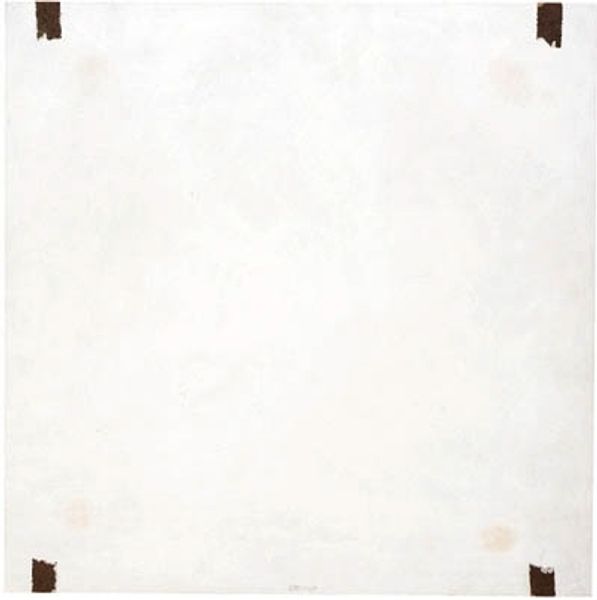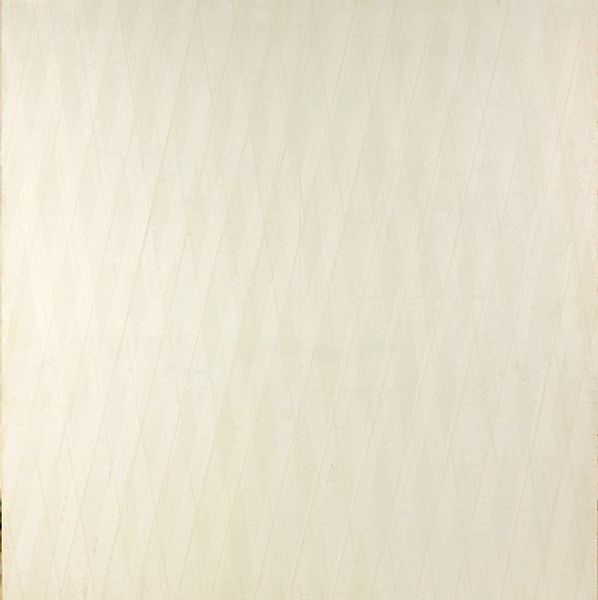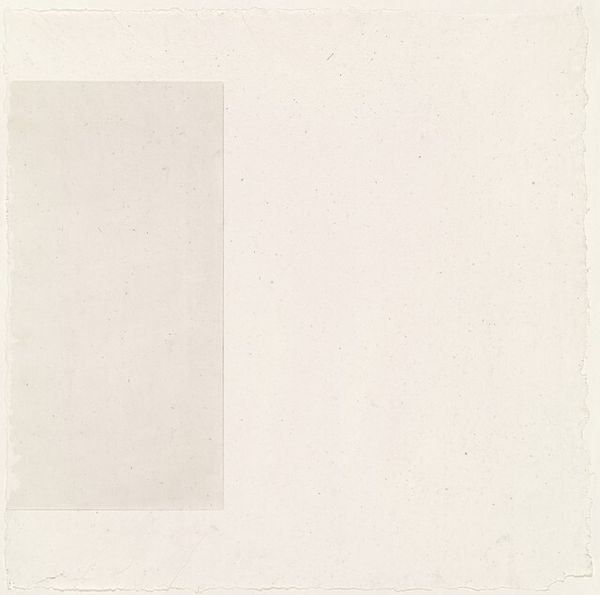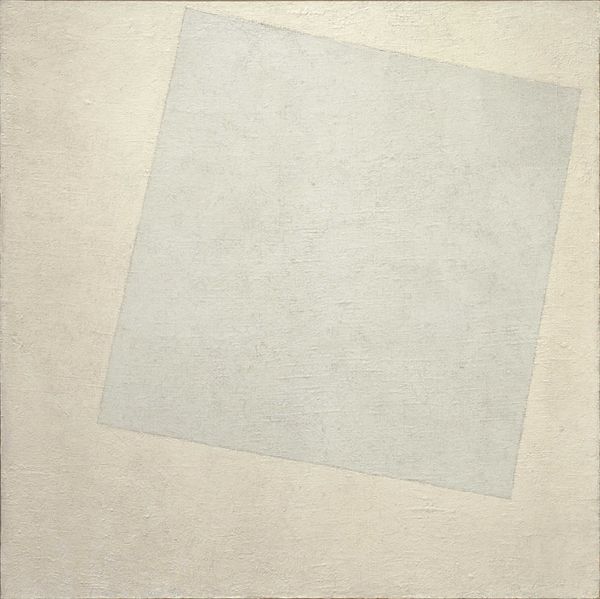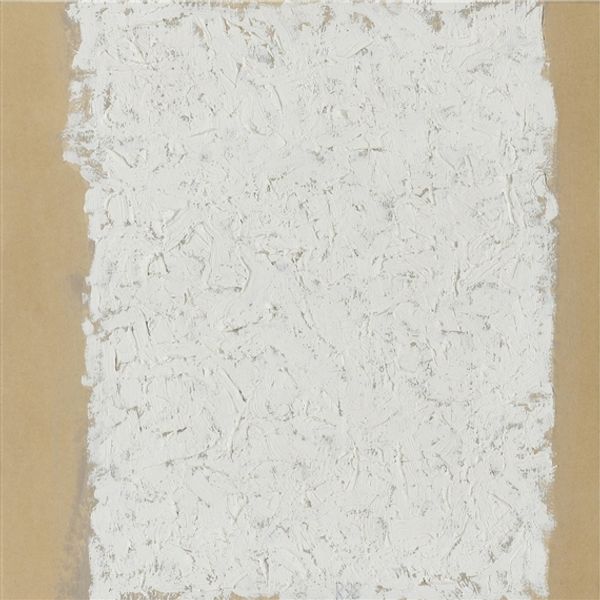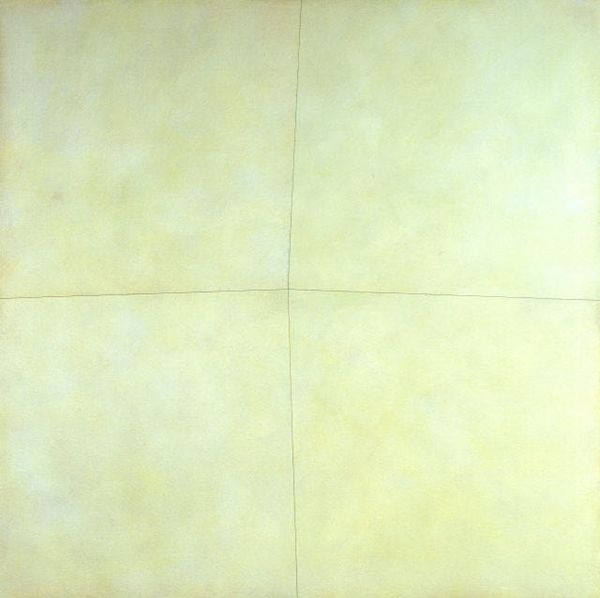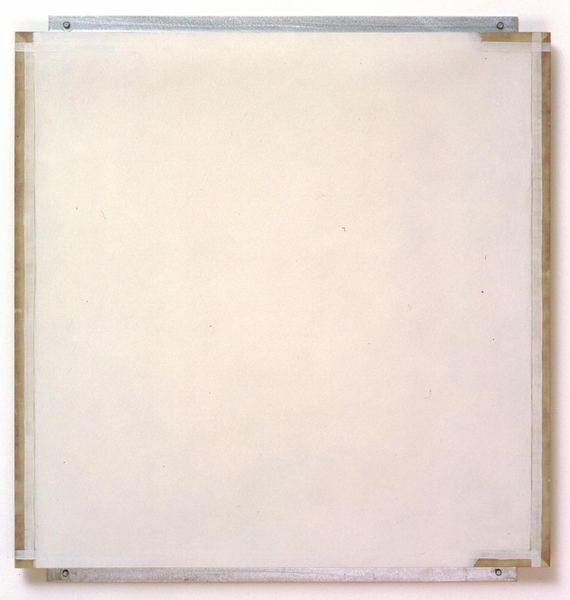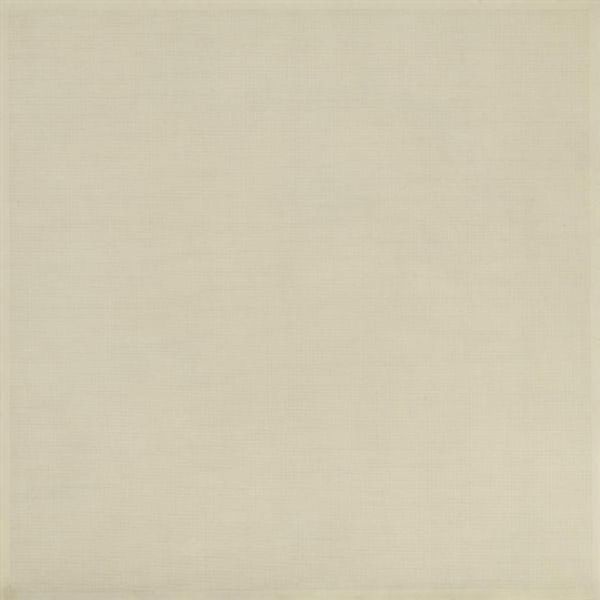
Dimensions: unconfirmed: 1003 x 1003 mm frame: 1163 x 1165 x 68 mm
Copyright: © DACS, 2014 | CC-BY-NC-ND 4.0 DEED, Photo: Tate
Curator: This is Piero Manzoni's "Achrome," currently residing at the Tate. The date is unconfirmed, but Manzoni was working on similar pieces throughout his career. Editor: Its pale, almost clinical surface is quite striking. The grid structure imposes an order, yet the material seems to fight against it. Curator: Manzoni sought to reduce painting to its essence, challenging traditional notions of art. This piece uses texture to create visual interest, questioning the necessity of color. Editor: It evokes a sense of emptiness, perhaps a reflection of the existential anxieties of the postwar era. The Achrome series was produced amidst a period of cultural reevaluation. Curator: The lack of color and the emphasis on materiality invite a re-examination of what constitutes a work of art. I find its simplicity compelling. Editor: Absolutely, it pushes the boundaries of our aesthetic expectations and forces us to confront our own perceptions of value and meaning. Curator: It provides a unique and important contribution to the discourse surrounding art and its role within society. Editor: Indeed, Manzoni’s work still resonates with its radical simplicity.
Comments
Join the conversation
Join millions of artists and users on Artera today and experience the ultimate creative platform.
tate 7 months ago
⋮
Manzoni aimed to strip any type of storytelling from painting. For him, this meant removing colour from his works. In 1957, he began to produce painting-like objects he called 'Achromes.' He made them by soaking his canvases in kaolin, a soft clay used to make porcelain. The kaolin removed any colour, creating ‘nothingness’. The weight of the material caused it to sag, creating folds across the surface of the canvas. He described them as 'a white surface which is neither a polar landscape, nor an evocative or beautiful subject, nor even a sensation, a symbol or anything else: but a white surface which is nothing other than a colourless surface, or even a surface which quite simply ‘is’.’ Gallery label, August 2020
